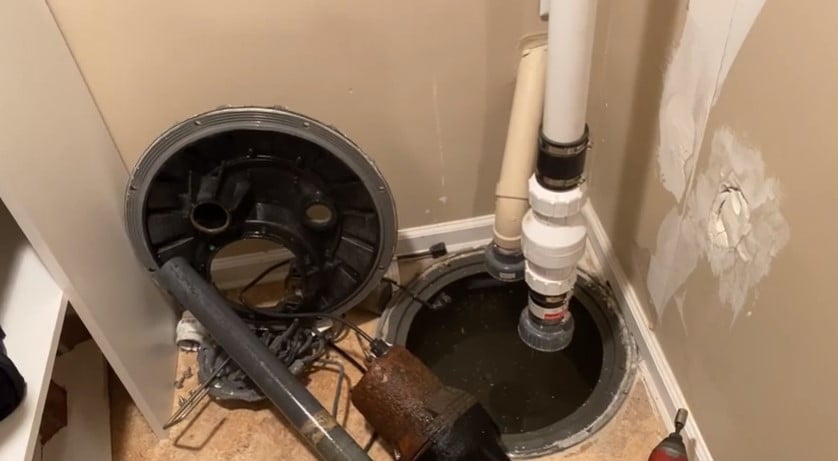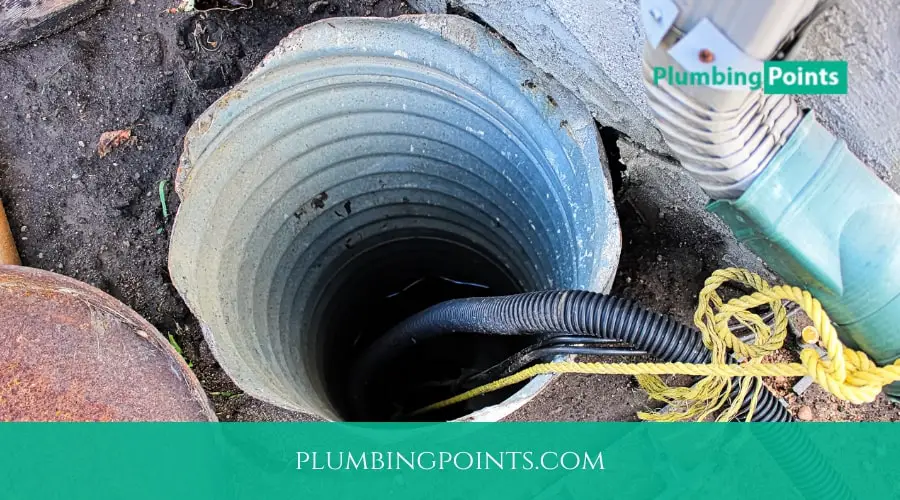Last Updated on July 2, 2023 by admin
In most basements, there’s a sump pump and next to it, there’s an ejector one. Now both of these are extremely important if you care about eliminating sewage water. A sudden breakdown of the sewage ejector pump can cause a huge nasty mess that will take days to clean up. And also, it’s GROSS.
There could be a number of reasons that the sewage ejector pump is not doing well. And to predict and deal with the problem you need some sense of troubleshooting sewage ejector pumps.
Let’s talk more about sewage ejector pump troubleshooting today.
Table Of Contents
Sewage Ejector Pump Troubleshooting: Common Problems & Their Solutions
Whether your sewage ejector pump is not shutting off is the main trouble or the float switch is acting up, there are simple troubleshooting steps you can try out. Let’s know more below.

Sewage Ejector Pump Troubleshooting List
- Pump Not Cycling Right.
- The Pump Fails in Evacuating Pit
- The alarm is Off.
Pump Not Cycling Right
Sometimes the sewage ejector pump does not cycle and that is when you need a solution. There can be many solutions to this problem. The first reason for such disappointing trouble could be a lack of electricity.
Check the power connection in the outlet. Use a light bulb to test the socket. If the outlet does not have power, then make sure to change the fuse or check the circuit breaker. Check the outlet once again and it could work. If you are not confident about dealing with electrical components, an electrician can help you out.
Sometimes the float design switch causes this problem. You can use a plastic coat hanger to engage it. Replacing it with a piggy switch is also a good idea. Now if your pump has a floating actuator. You need to lift it higher.
You also need to get rid of any dirt around the float. This will make the float even lighter and cycling will take place. In some cases, the manufacturer refers that the switch will need frequent replacement. This is because moisture starts absorbing within the wire insulation.
And so, the actuation gets affected once the wire drops. This can also lead to a short circuit. You can try straightening the power cord or simply replacing the switch. This should make your sewage pump work again.
The Pump Fails in Evacuating Pit
Usually, this problem shows up when the float has some extra debris weight on it. There could also be solid waste falling on the float. And so, the extra weight is causing misalignment of float. This will cause pretty short cycling of most sewage ejector pumps. Adjusting the floating actuator can solve the problem. You can also buy a new switch if float adjustment is not possible.
Clogging can also be a reason behind the issue. The pit might have an increased amount of waste in it. And so, the clogging is not letting raw sewage flow out of the waste line. You need to do some unclogging here. If the damage is too much, it may require a new waste line.

The Alarm is Off
Usually, the alarm may go off to notify you that the float rising has been too weird or abnormal. This means the pit is not evacuated properly. The warning might refer to blocked debris inside discharging pipes. And so, you will need to take immediate steps to prevent the overflow of waste.
Sometimes even when the pit is not fully occupied with waste, the alarm goes off. This could be due to an undersized pit. Or probably the floating actuator is been at a pretty low level. You need to contact the manufacturer if this is the problem and fix it.
Some Other Common Issues…
- If you own a pretty old sewage ejector pump, then maybe the tank that collects waste has a lot of grease build-up throughout these many years. The grease is obstructing regular flow by sticking to pipes. There’s only one way to stop this eventual breakdown and it’s by doing regular and professional cleaning.
- The small gray device known as the float switch might have gone too old. You need to replace these every few years to keep overflowing out from your sight.
- A quality ejector pump system can work for up to twenty years. Using a pump more than that limit might be another reason for witnessing frequent troubles.
- Some people flush stuff such as baby wipes, paper towels, and pads down the toilet. This will at one certain point cause serious trouble in your home’s sewer system. Even with grinders, sewage ejector pumps might not be able to deal with these. So be cautious about flushing any solid waste.
FAQ:
How often should a sewage ejector pump run?
It actually depends on the frequency of the basin getting filled. There’s a sensor in the pump that needs tripping after the float switch rises. This is when the ejector pump will run. And depending on how the frequency the basin fills, the pump will run accordingly.
The pump should run usually not more than ten seconds at one go. Sometimes due to bad valve or water infiltration or leakage, the pump runs longer. If that’s the case then it needs repairing.
What is a sewage ejector pump?
When you have a bathroom, laundry room, or any plumbing fixture installed at a lower level than the main sewer line, a sewer ejector pump helps to flow water in the right way from your house. It’s also known as a pump-up ejector system since the flow goes upwards to drain out of your house.
How does a sewage pump work?
There is a pit chamber inside the ejector pump. This is where all liquid and solid waste stays after the suspension from home. Due to its common-built design, the pump usually handles smaller solid particles.
There are modern pumps that come with a grinder to break down larger ones. The waste rises to pit chamber. Once it reaches a particular level, a switch gets actuated. Due to this, the pressure gets released which helps in pushing the waste into sewer system. And that’s how the mechanism basically works.
How to Install a Sewage Ejector Pump
Why can’t we use reciprocating pumps in a series?
It’s not impossible to use two reciprocating pumps. But it’s just inconvenient to go in that manner. The two reciprocating pump needs to be installed in such a way that the first pump’s suction fits with the second pump’s discharge. The discharge volume will be very similar to a single pump. And that would be a bad idea to try instead of getting one larger pump.
Conclusion
Handling waste is a pretty daunting task that our home sewage ejector pump does regularly. And due to the burden, it sometimes starts to not perform correctly.
Machines are always accessible to error and so knowing a few sewage ejector pump troubleshooting tricks will always keep you on the safe side. Homeowners can easily deal with troubles without spending extra money on professional services for their sump pumps or vent pipe problems.
However, when the case is serious, saving money becomes less important than getting the pump treated. You should be able to tell the difference between when to try troubleshooting yourself and when there’s a need to call a professional.
